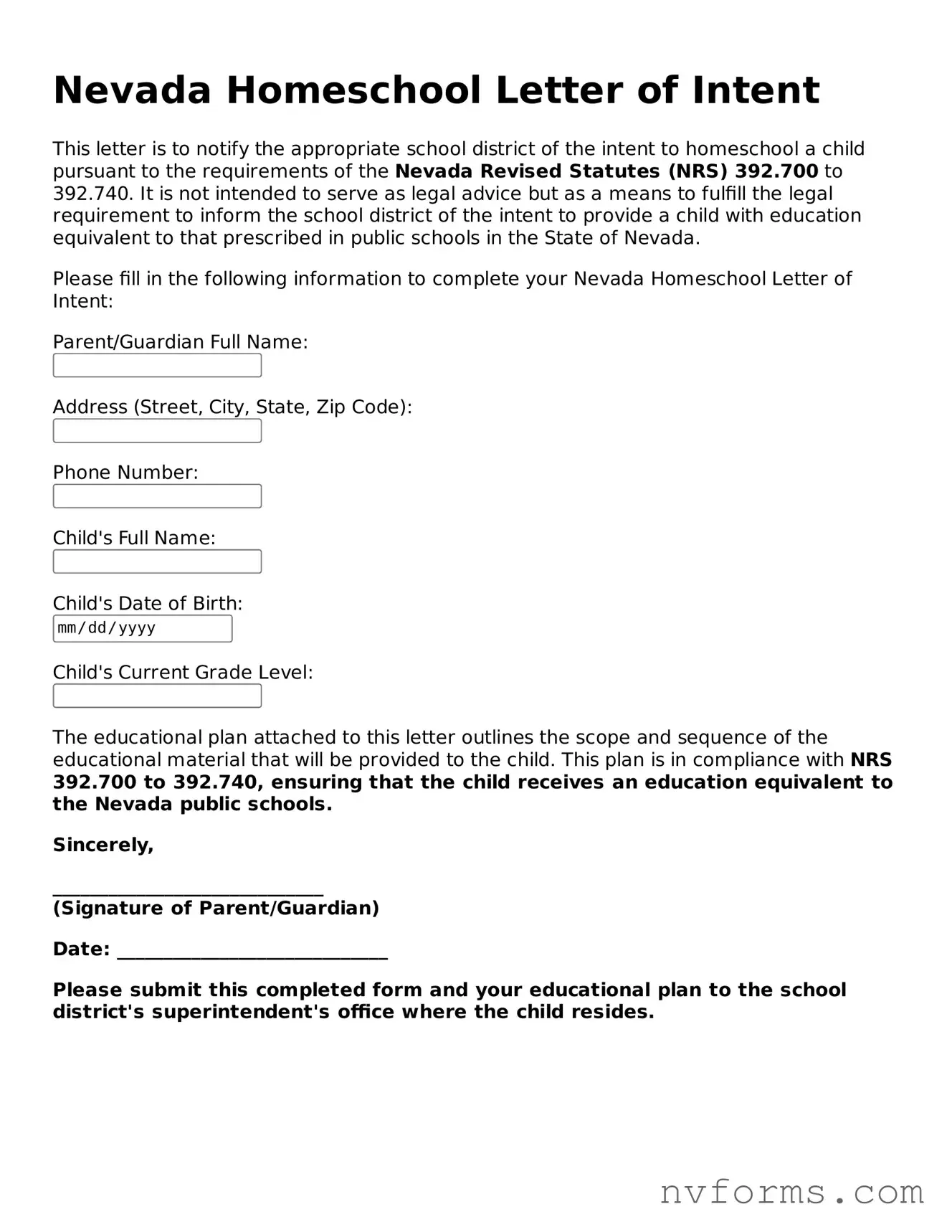Free Homeschool Letter of Intent Form for Nevada
The Nevada Homeschool Letter of Intent form is a crucial document for parents or guardians planning to homeschool their children in Nevada. It serves as an official notification to the relevant educational authority about the intent to educate a child outside the traditional public or private school system. By completing and submitting this form, families embark on the journey of providing a tailored educational experience that meets their child's unique needs.
Launch Editor
